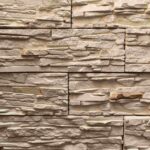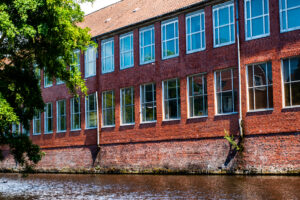Introduction
Brick restoration is a crucial aspect of preserving the aesthetics and structural integrity of your building. This guide aims to provide you with a step-by-step roadmap for successful brick restoration.
Understanding the Basics of Brick Masonry
What is Brick Masonry?
Brick masonry is a construction technique that involves using bricks to build walls, arches, and other architectural elements. Bricks are stacked and bonded together using mortar, a mixture of cement, sand, and water. This technique has been used for centuries due to its strength and durability.
Types of Bricks Used in Masonry
Bricks come in various types, each suited for specific purposes:
- Clay Bricks: Commonly used for general construction due to their natural color and durability.
- Concrete Bricks: Known for their strength and resistance to weathering.
- Fire Bricks: Designed to withstand high temperatures and often used in fireplaces and ovens.
Tools and Materials
To embark on a brick restoration project, gather the following tools and materials:
Tools:
- Brick Hammer: Used for breaking and trimming bricks.
- Chisels: Essential for removing damaged mortar.
- Trowels: For applying mortar and smoothing surfaces.
- Safety Equipment: Includes goggles, gloves, and a dust mask.
Materials:
- Bricks: Choose bricks that match the size, color, and texture of your existing bricks.
- Mortar Mix: Select the appropriate mortar mix based on your project’s needs.
- Cleaning Solutions: Depending on the type of dirt or stains, you may need specialized cleaning solutions.
Assessing the Condition of Your Brickwork
Visual Inspection
Before starting restoration, conduct a thorough visual inspection of your brickwork. Look for:
- Cracks: Both horizontal and vertical cracks can indicate structural issues.
- Spalling: Surface deterioration with broken or chipped bricks.
- Discoloration: Stains, efflorescence, or discoloration can affect the appearance.
Structural Assessment
For structural concerns like sagging walls or leaning chimneys, consult a structural engineer. They can assess the severity of the issue and recommend necessary repairs.
Identifying Damage
Common types of brick damage include:
- Efflorescence: White, powdery deposits caused by salt migration.
- Mortar Erosion: Crumbling or missing mortar between bricks.
- Loose Bricks: Bricks that have become detached from the mortar.
Preparing for Restoration
Safety Precautions
Safety is paramount during brick restoration. Always wear personal protective equipment, especially when working at heights or with power tools.
Site Preparation
Clear the work area of debris, vegetation, and any obstructions. Ensure a safe and accessible workspace to avoid accidents.
Gathering Necessary Supplies
Compile all the tools and materials you’ll need in advance. This includes bricks that match the existing ones, the appropriate mortar mix, and any cleaning solutions.
Brick Cleaning and Surface Preparation
Cleaning Methods
Cleaning methods vary depending on the type and extent of dirt or stains:
- Pressure Washing: Effective for removing surface dirt and grime.
- Chemical Cleaning: Suitable for more stubborn stains or efflorescence.
- Hand Scrubbing: Precise cleaning for delicate areas.
Removing Stains and Efflorescence
Efflorescence can mar the appearance of bricks. To remove it:
- Brush off loose deposits.
- Apply a mild acid solution (vinegar and water) to dissolve the salts.
- Rinse thoroughly with clean water.
Surface Preparation
Before restoration, ensure the brick surface is clean, dry, and free of loose mortar or debris. A clean surface is essential for proper adhesion of new mortar.
Repairing and Replacing Bricks
Brick Repair Techniques
Repairing damaged bricks involves these methods:
- Patching with Mortar: Fill cracks and gaps with mortar to restore structural integrity.
- Replacing Individual Bricks: Replace severely damaged bricks while maintaining the overall pattern.
- Reattaching Loose Bricks: Secure loose bricks by removing damaged mortar and applying fresh mortar.
Replacing Bricks
To seamlessly replace damaged bricks:
- Carefully remove the damaged brick using a chisel and hammer.
- Clean the area of old mortar.
- Apply mortar to the replacement brick and position it.
- Smooth the mortar joints to match the surrounding bricks.
Mortar Mix and Application
Choose the right mortar mix for your project, considering factors like weather resistance and color matching. Proper application of mortar is crucial for long-lasting repairs.
Restoring Brick Joints
Repointing Brick Joints
Repointing involves removing deteriorated mortar and replacing it with fresh mortar. Steps include:
- Remove old mortar with a chisel.
- Dampen the joint.
- Apply new mortar and shape it to match the existing joints.
- Allow it to cure.
Tools and Techniques
Invest in quality tools like a mortar jointer and a pointing trowel. Practice creating consistent and aesthetically pleasing mortar joints.
Protecting and Sealing Your Brickwork
Sealant Options
There are two main types of sealants:
- Penetrating Sealants: Absorb into the brick, providing invisible protection.
- Film-Forming Sealants: Create a visible film on the surface, offering added sheen.
Choose the type that best suits your aesthetic preferences and protection needs.
Applying Sealant
Follow these steps when applying sealant:
- Ensure the brick surface is clean and dry.
- Apply the sealant evenly using a brush or roller.
- Allow it to dry completely.
Maintenance and Long-Term Care
Regular Inspection
Schedule routine inspections to catch and address issues early. Look for signs of new cracks, stains, or loose bricks.
Preventive Measures
Prevent future damage by:
- Controlling Water Runoff: Ensure water drains away from your brickwork to prevent erosion.
- Avoiding Harsh Cleaning Methods: Gentle cleaning methods extend the life of your bricks.
Professional Maintenance
For complex or large-scale brick restoration projects, consult with experienced masonry professionals. They have the expertise and equipment to handle extensive repairs.
Frequently Asked Questions (FAQs)
The choice of mortar mix depends on factors like climate, brick type, and project goals. Consult with a local masonry expert for guidance on selecting the most suitable mortar mix.
Yes, efflorescence can be removed using mild acid solutions and proper cleaning techniques. It’s essential to address the source of efflorescence to prevent its recurrence.
Yes, matching bricks is possible. Seek out brick suppliers or masonry professionals who can help you find bricks that closely resemble your existing ones in terms of size, color, and texture.
Regular inspections are recommended at least once a year, preferably in the spring or fall. More frequent inspections may be necessary in areas with extreme weather conditions.
You should consider professional assistance for significant structural issues, extensive damage, or when you lack the necessary experience and tools for complex repairs.
Conclusion
In conclusion, mastering masonry and brick restoration is a valuable skill for property owners and professionals alike. By understanding the fundamentals, assessing your brickwork, and following best practices for cleaning, repair, and maintenance, you can ensure the longevity and beauty of your brick structures. Don’t forget to contact us here at Bricklands today for more information!
References:
National Park Service (NPS) - Preservation Briefs
- Website: https://www.nps.gov/tps/how-to-preserve/briefs.htm
- The National Park Service provides a collection of Preservation Briefs that offer guidance on various historic preservation topics, including brick masonry restoration. These briefs contain valuable information and best practices.
U.S. Environmental Protection Agency (EPA) - Lead Renovation, Repair, and Painting Program
- Website: https://www.epa.gov/lead
- The EPA’s Lead Renovation, Repair, and Painting Program provides information on safe practices for renovation and repair work that may involve lead-based paint. Brick restoration often involves addressing old painted surfaces, and this program offers guidance on handling such projects safely.
U.S. General Services Administration (GSA) - Historic Preservation
- Website: https://www.gsa.gov/real-estate/historic-preservation
- The U.S. General Services Administration offers resources and guidelines related to historic preservation, including information on restoring and maintaining historic structures, some of which may include brickwork. This resource can be particularly helpful for those involved in government-owned historic buildings or interested in federal guidelines on restoration.








